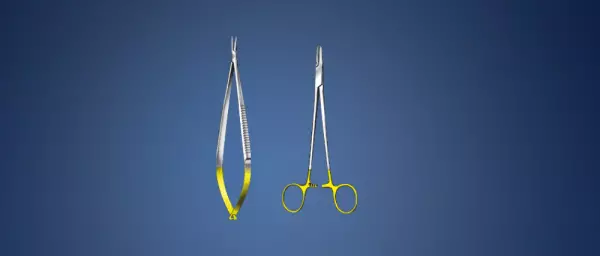
A wide range Ralk and Bunnel hand drills as well as Gigli saws ready for you. For regular daily use...
Portal and digital medical technology fair of the largest MedTech cluster in Germany

A wide range Ralk and Bunnel hand drills as well as Gigli saws ready for you. For regular daily use...

If in the general Surgery, Laryngoscopy, Arthroscopy, plaster (of Paris), ENT surgeon or gynaecology...

Several features of medical cast saws are useful for the removal of casts. These saws are durable, lightweight, and powerful. Their hexagonal blade mounting system makes them easy to operate. The M-PACT American Orthopedic(tm) Cast Cutter is a rugged, lightweight, heavy-duty saw with a ten-foot power cord and a single 2.5"-diameter blade. This saw also includes a one-year warranty.
The most popular features of these saws include their ergonomic design, ease of use, and ease of cleaning. The Blue Star Cutter plaster saw is easy to operate, and its electronic speed controller allows users to adjust the level of vibrations. A high-quality cast saw should be able to separate plastic and plaster casts safely. This tool is also easy to operate and features a safety guard and a dust collection system. It is highly recommended that you hire a medical professional to clean and maintain it.
When using a medical cast saw, make sure to purchase a high-quality tool. Although these tools are very safe, they can still be intimidating to patients. They often sound like an air compressor when they are turned on, and the exposed blade looks dangerous. However, you should remember that the blade oscillates thousands of times per minute. The sharp, narrow teeth of a cast saw blade ensure that the blade does not cut the patient.
The use of a medical cast saw is safe, but it should be used only by a medical professional. Care must be taken when using a cast saw, as even the smallest mistake can lead to a burn or skin irritation. Thankfully, injuries related to medical cast saws are rare, but precautions should be taken. When operating a cast saw, make sure the blade is sharp and clean. If the blade is damaged or dull, it is best to change it.
While medical cast saws are a relatively safe device, they should be used by trained personnel. The use of a medical cast saw should never be done without the proper training and padding. The risk of injury from a cast saw is very low. In fact, there are only a few instances of a doctor or healthcare provider being injured using a castsaw, but the risk is small compared to the trauma caused by the procedure itself.
Pneumatic cast saws use a pneumatic motor to cut a cast. They use a serrated blade that oscillates at high speeds perpendicular to the axis of the machine. They are portable and powered by a pressurized gas source. There are also different types of a medical cast saw. They all have their pros and cons. In most cases, a cast saw can be used to remove a broken bone.
Become a digital exhibitor yourself in the online portal of the largest and best-known MedTech cluster region in Germany and inform the world of medical technology about your products and services as well as about news, events and career opportunities.
With an attractive online profile, we will help you to present yourself professionally on our portal as well as on Google and on social media.